|
#Autism & #COVID19
Autism & COVID-19; www.sarasautismsite.com. Pederson (2020) reports from the Lance Psychiatry Journal that persons on the autism spectrum are at higher risk for COVID-19 complications. The reasons are several, first they tend to have immune disorders and other co morbidities; plus their routines are severely disrupted. Added to that, patients may have communication and expression difficulties which prevent them from comprehending the extremeness of the situation. If providers are needed, parents and caregivers must keep calm, facilitating communication and managing out-of-the-box thinking, such as using TelaDoc to connect with clinicians. Or, asking to wait in the car and texting you when the doctor is ready to see you; doing any Check-In online. Also, asking to allow the parent and caregiver to accompany the autistic person throughout the visit process. < My Thoughts > “,,,allow the parent and caregiver…” Connecting with new routines, strange environments, persons in masks and gowns, can bring on expected undesirable behavioral responses. Even some behaviors you’ve never seen before. Try to keep a ‘bag of tricks’ handy – communication devices- Apps, iPad, tablets, music with earphones, weighted vest or lap pad, sensory (sight, sound, touch, smell & taste) toys, and/or a favorite cold drink. And of course, any meds needed so as not to miss a dosage if you are detained in the office or in travel. Many times we have scheduled early appointments, only to find ourselves traveling home in heavy 5pm traffic, in spite of our careful planning; due to doctor overbooking, sending us somewhere for tests, or just playing the ‘waiting’ game. When Sonny sees the ‘Toy Story’ lunchbox, this signals several things – we might be going to the park for lunch; we have plenty of goodies to last us; we are out for the long haul. This mindset helps him stay calm until it’s obvious that we are not having fun! More reason to have his favorite Vid, App, or familiar whatever on a never-ending loop. This is the perfect storm of challenges for parents and caregivers, clinicians, and nearby observers who are convinced they are seeing a ‘very spoiled child’. Maybe it’s time to advertise “Autism Onboard.” REFERENCE Pedersen, T. (2020). Meeting the Needs of Autistic Individuals During COVID-19; Retrieved online from – psychcentral.com/ #Temperature Changes & #Autism The weather is changing and you may find that the attitude of your favorite person with autism is changing too. Hypo or hyper sensitivity to temperature can affect those on the spectrum. A writer for the Spirit of Autism says, “My son’s refusal to wear a coat in winter I thought was either driven by stubbornness or laziness. But many people with ASD may feel ‘hot’ all the time, even when it’s ‘cold’. Or, they can feel ‘cold’ all the time, even when it’s ‘hot’ weather.” If their nervous system is on ‘high alert’, they may suffer from poor or underdeveloped circulation. Their hands and feet are always cold because their blood leaves their extremities to deliver oxygen to the internal organs and muscles. Unfortunately, the body is unable to regulate and may become overheated or always have cold hands and feet due to thermoregulation issues. Davide-Rivera (2015) writes that 'temperature regulation' issues can put a person in a state of constant discomfort. This can lead to sensory overload, shutdowns, and even meltdowns. The body’s core temperature is regulated by neural feedback mechanisms in the brain, which operate through the hypothalamus. A very neutral temperature may be insisted upon by the ASD person’s bath, their food, and even for the room they’re in. Even when taking even moderately hot showers, those who are temperature sensitive may report feeling dizzy, light-headed, or seeing spots. And then when cooling down, they may feel the cold much faster than you would expect. < My Thoughts > “…mechanisms in the brain…” Sometimes when the endocrine system is ‘out of whack’, it’s easy to feel these same kinds of sensations. This may be hard to diagnose without very thorough and expensive tests, which #clinicians and insurance companies tend to want to avoid. Just saying. Davide-Rivera (2013) – One of the first things I learned about my #Asperger’s #diagnosis was that there were three core deficits that accompany this condition – the lack of theory of mind, executive dysfunction, and weak central coherence. There were also a host of other issues like #sensory processing difficulties – being #hyper or #hypo sensitive to outside stimuli like to heat, cold, or pain. < My Thoughts > “…a host of other issues…” #Parents may take years to find out that their ‘wild child’ has really painful sensory issues. Often, children really don’t want to give you a bad time… they’re just having a bad time. van Someren (2016) – Clinicians use the ETSRS questionnaire to narrow down temperature regulation issues. Questions cover differentiating experiences of the individual’s body ‘heating-up’ and ‘cooling-down’, unexpectedly. Some persons with sensory issues only complain about problems with their extremities, and only under certain conditions. Determining whether this happens to them during the daytime or the nighttime. Whether the person is in an upright or supine position, awake or asleep. If they are inside or outside, in summer or in winter; and so on is helpful. These questions are designed to determine which parts of the body seem to be affected. Answering a variety of these types of questions further narrows down the specific #regulation issue. REFERENCES Davide-Rivera, J. (2013). Twirling Naked in the Streets & No One Noticed: Growing Up with Autism; eBook Edition. Davide-Rivera, J. (2015). Why Does My Child Refuse to Wear a Coat?; Autism Answers, Traits/Behaviors; Retrieved online from – http://aspiewriter.com/2015/07/temperature-regulation-why-does-my-autistic-child-refuse-to-wear-a-coat.html van Someren, E., Dekker, K., et al.(2016). Experienced Temperature Sensitivity & Regulation Survey (ETSRS); Journal of Sleep Research; V25, p125. #LearningDisability Learning Disabilities: An Overview By: LD OnLine. Retrieved from – http://www.ldonline.org/article/5613/ Excerpts from this article:
What is a learning disability? Some individuals, despite having an average or above average level of intelligence, have real difficulty acquiring basic academic skills. These skills include those needed for successful reading, writing, listening, speaking and/or math. These difficulties might be the result of a learning disability. The Individuals with Disabilities Education Act (#IDEA), a federal law, defines a learning disability as a condition when a child's achievement is substantially below what one might expect for that child. Learning disabilities do NOT include problems that are primarily the result of emotional disturbance, or visual, hearing, emotional or intellectual disabilities. Many children with LD have struggle with reading. The difficulties often begin with individual sounds, or phonemes. Students may have problems with rhyming, and pulling words apart into their individual sounds (segmenting) and putting individual sounds together to form words (blending). This makes it difficult to decode words accurately, which can lead to trouble with fluency and comprehension. As students move through the grades, more and more of the information they need to learn is presented in written (through textbooks) or oral (through lecture) form. This exacerbates the difficulties they have succeeding in #school. What are the types of learning disabilities? #LD is a broad term. There are many different kinds of learning disabilities. Most often they fall into three broad categories:
Other related categories include disabilities that affect memory, social skills, and executive functions such as deciding to begin a task. #Dyslexia (difficulty #reading) Dyslexia is characterized by difficulties with accurate and/or fluent word recognition and by poor spelling and decoding abilities. Reading disabilities affect 2 to 8 percent of elementary school children. To read successfully, one must:
A person with dyslexia can have problems in any of the tasks involved in reading. However, scientists found that a significant number of people with dyslexia share an inability to distinguish or separate the sounds in spoken words. Some children have problems sounding out words, while others have trouble with rhyming games, such as rhyming "cat" with "bat." Yet, scientists have found these skills fundamental to learning to read. Fortunately, remedial reading specialists have developed techniques that can help many children with dyslexia acquire these skills. However, there is more to reading than recognizing words. If the brain is unable to form images or relate new ideas to those stored in memory, the reader cannot understand or remember the new concepts. Other types of reading disabilities can appear in the upper grades when the focus of reading shifts from word identification to comprehension. < My Thoughts > “…rhyming "cat" with "bat." Another way for a new reader to experience how one letter can change a word, thus changing the meaning altogether is to try this. Say, “How can I change a “cat” into a “bat”? Oh, by changing the letter “c” to the letter “b”! So simple and children love it. Let them try the next one. For instance, change a “cat” into a “hat”… and so on. #Dysgraphia (difficulty writing) Writing too, involves several brain areas and functions. The brain networks for vocabulary, grammar, hand movement, and memory must all be in good working order. A developmental writing disorder may result from problems in any of these areas. For example, a child with a writing disability, particularly an expressive language disorder, might be unable to compose complete and grammatically correct sentences. < My Thoughts > “…brain networks… must all be in good working order.” For some reason, I cannot give specifics here… only teaching experience… a child with ASD can keyboard on the computer more easily than trying to put pencil to paper. #Dyscalculia (difficulty with mathematics) Arithmetic involves recognizing numbers and symbols, memorizing facts, aligning numbers, and understanding abstract concepts like place value and fractions. Any of these may be difficult for children with developmental arithmetic disorders, also called dyscalculia. Problems with number or basic concepts are likely to show up early. Disabilities that appear in the later grades are more often tied to problems in reasoning. < My Thoughts > “…recognizing numbers and symbols…” If a child reverses or mixes up letters, there might be a good chance that the same thing occurs when they encounter numbers. Then when ‘word problem’ show up in the curriculum you have a real problem on you hands. Associating number value with the number or word which represents it takes ‘real’ effort. There are ways to work through this problem, one must just find it. Xin, et al. (2017) tell us that interactive technology like a whiteboard, or using an iPad application can increase on-task behavior and improve student motivation. Teachers allowed images and photos to accompany lessons for easier clarification for struggling students, and success was met with a ‘preferred’ student activity.
REFERENCE: Xin, J., Sheppard, M., et al. (2017). Brief Report: Using iPads for Self-Monitoring of Students with Autism; Journal of Autism & Developmental Disorders; V47, p1559-1567. #ASD #BLOG SOCIAL STORIES Visual Support – Part 1 of 3 #SocialStories When to use Social Stories – Social Stories can be made to be simple or more complex for those with both low functioning and high functioning autism. These stories can be shared by the general population, as well. One can create further theme development, allowing for extended activities of modeling, shaping, or role-playing. This however, may require the person’s in-depth self-evaluation, perspective-taking and Theory of Mind (ToM) in order to understand the expectations hoped for. Also, consider the complexity of change needed and the degree to which the undesirable behavior needs to be extinguished. When presenting new information which requires complex understanding, be prepared to anticipate and calmly answer your child’s questions. Remember they are probably going to compare it to other parental or school requests. For example, they may want to know –
< My Thoughts > “CHANGE…understanding or experiencing a new situation…” #ChangeBehavior Before anyone is able to change a behavior, routine, or schedule, you need to know where they are in their basic understanding. A ‘baseline’ for learning that new skill needs to be established. And, when you know what they already have learned, you can do what I call ‘Starting Where They Are’. Which was the thesis for my 2013 Master’s Degree in Special Education. In addition to this, one needs to know if the person understands someone else’s perspective. Do they have Theory of Mind (ToM)? Cariello & Capell (2015), Carrie tells us that her autistic son Jack’s biggest issue was with theory of mind, or the concept that other people have thoughts, ideas, or opinions that are different from his own. Let’s say, she tells us, that Jack really, really, really loves hot chocolate. He thinks and talks a lot about hot chocolate: which brand is his favorite, and the best marshmallows to layer on the top. And then one afternoon you casually remark that you don’t really care for hot chocolate. That you had hot chocolate once when you were a little girl and it burned your mouth and you’ve never really liked it since. Right away young Jack’s brain begins to short-circuit in a way that suggests his head may explode. He starts to jump and stim and chant things like, “How can you NOT like hot chocolate I LOVE hot chocolate, hot chocolate, hot chocolate, I can’t believe you don’t like hot chocolate, HOT CHOCOLATE!” This can go on for hours. And if his own head does NOT, in fact, explode – if it stays firmly attached to his neck in one round piece – he will do everything in his power to make sure that your head explodes instead. < My Thoughts > “‘Theory of Mind’ is thinking that everyone is having the same ‘sensory experience’ that you are.” #TheoryOfMind Theory of Mind is thinking that “…everyone sees and feels and likes the same things that you do.” When children find it difficult (if NOT impossible) to understand the emotions, intentions and behaviors of other people, they are said to lack ‘theory of mind’ (ToM). We don’t always know to what extent a child can ‘take’ another’s perspective; therefore, we may want to add ‘Social Stories’ to introduce the concept of ‘perspective’, because they can include ToM. Sicile-Kira (2014) says that, “Social relationships are important to all people, yet are difficult for many on the autism spectrum to develop naturally.” “…having social skills, knowing about expected yet often unstated rules of behavior, and social boundaries.” “…there are different ways of teaching what is needed to be learned about relationships.” Some of the things she suggests are – Social Skills Training, Social Stories, Social Thinking, and Hidden Rules such as ‘assumed knowledge’, social hierarchies, and experiencing expected/unexpected situations. < My Thoughts > Social Stories are widely used for teaching awareness about… “expected/unexpected situations.” Consider creating a Social Story just for fun, or for building skills, introducing change, or what to expect in social interactions. You can do this through Comic Strips, Storyboards, or Social Stories; enhancing all of these with age-appropriate Visuals REFERENCES used here: Cariello, C. & Capell, J. (2015). Someone I’m With Has Autism; eBook Edition. Sicile-Kira, C. (2014). Autism Spectrum Disorder (revised): The Complete Guide to Understanding Autism; New York, New York: Penguin Random House Company. #ASD #BLOG SOCIAL STORIES Visual Support – Part 2 of 3 #SocialStory #ASD #BLOG SOCIAL STORIES – Part 2 of 3 A favorite of parents and teachers for learning self-awareness would by teaching social skills through ‘Social Stories’. Carol Gray was the official originator of ‘Social Stories’ and you can find much online to learn more about her methods. Versions of these teacher/parent–made stories have been used the world over, in some form or another. You don’t have to take a course or follow a certain protocol in order to create them. Crozier & Tincani (2007) tell us that “a ‘social story’ is a short story written for an individual. The story describes a specific activity and the behavior expectations associated with that activity.” You can also create a story to introduce ‘novel’ events such as Holiday gatherings, birthday parties, or other events. #BehaviorExpectations For instance if you are going to take your child to the park, you could create a little story to show them what to do or expect to see there. Here is an example of what the authors used as ‘Social Story’ text for a preschool boy who was mostly reclusive, but became animated during Preschool snacktime. #Snacktime My name is Daniel We have snacktime at school Friends talk & share snacks Some friends say “Hi” Some friends ask for a drink Some friends ask for more snacks I can say “Hi” to my friends I can ask for a drink I can ask for more snacks Friends are happy at snacktime! The authors commented that many children need to have pictures added to the story, these can be real-time or Clip Art. Also many need to have verbal prompts added for emphasis and to increase success. #CreativeParents
< My Thoughts > Use your creative license here. Children with autism or autism-like behavior take in a lot more than parents are aware. They often use peripheral vision to watch your every move, but you’ll never catch them looking at you. So, create this social stories within his or her view. Best of all scenarios would be to have them choose a picture or help you in some way, however small. Of course, the latest twist on Carol Gray’s Social Stories is the APP available so that you can create, present, and store your child’s stories on your iPad or iPhone. Smiles. Reference used here was: Crozier, S & Tincani, M. (2006). Effects of Social Stories on Prosocial Behavior of Preschool Children with Autism Spectrum Disorder; Journal of Autism Developmental Disorders; V37, p.1803 - 1814. NEXT: SOCIAL STORIES – Part 3 of 3 #ASD #BLOG Goal of a Social Skills Story – #SocialSkills The main objective for any intervention strategy should be to help the child with autism cope with and better understand expected behaviors, skills, and communications. Social Stories WILL engage children, thus helping them learn better ways of interacting with their environment, encounters, and situations. These stories CAN HELP to reduce an autistic child's stress, confusion, or anxiety. #HelpWithSocialStories Using Social Skills Stories as an intervention strategy will help you with improving your child's understanding of many situations that they are struggling with. This can have a positive affect on reducing unwanted behaviors. Generally, children with an autistic spectrum disorder are visual thinkers and learners, meaning they can often think in pictures. Social Stories use this 'picture' strategy and are usually visually rich, EASY TO USE plus, they can be edited and personalized to suit all ages and abilities. Retrieved from – http://www.autismsocialstories.com/behavior/index.html #ComicStrip Create your own Comic Strip or Storyboard. Use real-life images, Clip Art, or drawings for each important message. Social Stories for Autism may also provide autistic children with an insight into the thoughts, feelings and emotions of others. They ARE also a means of addressing communication difficulties and social awareness skills in all children with ASD. #StoryBoard Social Stories for Autism; Retrieved from – www.autismsocialstories.com/behavior/index.html #Homeschool People also ask – How to write social stories for children with autism? #Homeschool Write an outline of your social story, and consider aspects like setting, who else is in the scene, how long the event lasts and what happens during the situation. You want the story to be brief enough to maintain a child’s attention, but you also need enough detail to accurately describe a situation in a way a child with autism will understand behavior and skill expectations. #ChildsDevelopment Why are social stories so important for children with autism? Social skills are an important piece of your child’s development, but children with autism benefit so much from social stories. Social stories will help your autistic child to better understand and follow rules and routines of a new event or situation. Or, to gain insight into the perspectives of others. #Communicate The ability to communicate one’s wants and needs help in decreasing frustrations which are provoking negative behaviors. Also helping in increasing the opportunity to learn to communicate one’s emotions and expressive language. The ability to communicate one’s wants and needs helps in decreasing frustrations which are provoking negative behaviors. Which at the same time, helps in increasing the child's opportunity to learn to communicate their emotions and expressive language. Know the facts both positive & negative, but focus on the positive. Focusing on the positive behavior reduces anxiety. Give examples of what to do, instead of what NOT to do. #NoSchool No School: Free Social Story website – Brookereagansclass.com/no-school-free-social-story A social story about school being closed –
Retrieved from – Brookereagansclass.com/no-school-free-social-story < My Thoughts > Adjust this information as needed for your family's current circumstances. Try to keep it positive and age appropriate. Maybe different stories for each family member. Let them help you create one that’s just right! #PersonalSpace
Social Stories About personal space – 1. Use visual cues to illustrate personal space Visual cues are super helpful for kids, especially those with autism and/or hyperlexia. You can use a visual clue like a hula hoop to demonstrate the invisible personal space bubbles that we all have. Or try holding a 6 ft. object between you and your child to show how much space is needed. 2. Teach social cues for body language Make sure your child knows what to look for to determine whether they are too close or just the right distance from another person. Teach them to look for social cues such as:
3. Practice personal space Practice makes perfect, right? Kids can master the rules of personal space simply by practicing and repeating the skills over and over. Teach your kids the one-arm rule. That is, keep one arm length between you and your friend to maintain good personal space. Role playing is one way to practice personal space with your kids. You could even use their favorite toys or stuffed animals to demonstrate the concepts of personal space! 4. Look at pictures to explore personal space concepts Spend some time looking at pictures of people with your child. Talk about the body language the people are showing and whether or not good personal space is being observed. #SocialDistancing 5. Teach personal space language Be sure to not only model personal space language, but to teach your kids some helpful personal space related language. Some example phrases could include:
Retrieved from – https://www.andnextcomesl.com/2017/03/how-to-teach-kids-about-personal-space.html 12 Safety Devices To Protect Your Children Each year, children are injured by hazards in and around the home. The good news is that the risk of injury can be reduced or prevented by using child-safety devices and reminding older children in the house to re-secure safety devices after disabling them. Most of these safety devices are easy to find and are relatively inexpensive. You can buy them at hardware stores, baby equipment shops, supermarkets, drug stores, home improvement stores, on the Internet and through mail order catalogs. Safety devices should be sturdy enough to hinder access and yet easy for you to use. Voice warning alarms can be programmed with your voice, or that of their favorite beloved character. To be effective, they must be properly installed. Follow installation instructions carefully. Remember, too, that NO device is completely childproof; determined youngsters have been known to overcome or disable them. Here are some child safety devices that can help reduce injuries to young children. But, DO NOT count on them 100%. Parents and caregivers still need to be hyper-vigilant to what kids are up to, wherever they are.
Potvin (2013) remembers – I was trying to finish the summer yard work before it got any hotter. My neighbor was also outside working. We struck up a conversation. “How’re the kids?” he asked. “Fine,” I replied. But I noticed it was too quiet. Andrea should have been playing near me while I worked. She was NOT on the swing. She was NOT on the trampoline. I bolted into the house and searched everywhere for her. I tried NOT to panic, but I had a sinking feeling in my gut. I dashed back outside to yell at the neighbor, “Hey, have you seen Andrea?” We both started running to our backyards. We hollered for Andrea, but no answer. There was a board missing in the neighbor’s fence around his pool. “Call 911” Joe shouted. “I’ve got her, but she’s not breathing!” the ambulance arrived with sirens and flashing lights. Two men jumped out and began mouth-to-mouth resuscitation on Andrea. Time stood still as I could only watch helplessly. She had not been breathing for several minutes. Then she made a gurgling noise. She coughed and sputtered, trying to get air. She opened her eyes. The CPR had been successful. < My Thoughts > “CPR had been successful.” Learn Cardio Pulmonary Resuscitation (CPR) for baby, child, & adult; each requires different skills. Included in that should be Basic First Aid because of unusual bleeding which can occur due to some side effects of your child’s medication. Of course, all of this prevention is supposed to help your child feel SAFE to explore their environment. Try to balance this with plenty of SAFE play, and adventuresome activities. The Red Cross, most hospitals, and many private agencies teach these CPR classes. There are classes which includes Automated External Defibrillator (AED) training and purchase. These trainings should also include learning what to do if a child or adult is choking; such as the ‘abdominal thrust’ known as the Heimlich maneuver. And, stay certified. Trainings can include Basic First Aid (Medications can cause unusual wound bleeding… know how to treat ‘bite’ injuries.); make certain that all trainings show you how to deal with BOTH children and adults. These classes are all offered online, also. But this is something you should to do in person. Retrieved from – https://www.cpsc.gov/Safety-education/Safety-guides/kids-and-babies/childproofing-your-home-12-Safety-devices-protect YARD SAFETY The following was retrieved from – http://www.greaterlearninglp.com/6-Safety-steps-children-autism/ 6 Safety Steps To Consider When Setting Up A Yard For Autistic Children Posted by: Jenny Wise Tags: Activities, Children, Safety / Categories: Children, Speech As a parent, keeping your kids safe is your top priority, especially in your own yard. If you’re a parent of a child on the autism spectrum, you have some extra concerns to think about. Luckily, there are some simple ways to keep your yards safe, fun, and accessible for children on the spectrum. Follow these steps to keep your whole family safe. 1. Check Fences and Gates Often Children who are on the spectrum and/or very curious siblings can wander or bolt suddenly. That’s why having a secure, functional perimeter fence is essential. If you don’t have a fence, consider having one installed. If you have a fence, do a perimeter sweep on a regular basis to check for structural issues. To keep your kids extra safe, install a keyed or combination lock on any gates they have access to while outside. This ensures that a strong wind, or curious hand, won’t be able to swing gates open. Determined pets have also been known to open gates and get to the other side of fences. 2. Keep Lawns and Patios Clean Sensory issues can make your children sensitive to scratchy grass or slippery spots. Aside from sensory issues, problems with your patio and yard can also cause other issues. Children can trip and injure themselves when running over holes in the ground or loose portions of patios. Do a check from time to time of your yard, and try to keep things tidy, with a good line-of-sight to all areas. 3. Set Up SAFE, Accessible Fun There are so many fun activities you can set up for your kids on the spectrum, but sometimes your children may want to have some traditional backyard fun. Swing sets and trampolines are always a great addition to any family’s backyard, but be sure your family is practicing safety rules. Falls and accidents can cause serious injury, so always supervise your children when swinging or on the trampoline or jungle gym. Helmets and knee pads can make falls less serious and give you peace of mind. Look for the best swing sets to suit your family’s needs, and be sure to follow installation instructions when setting it up. 4. Be Aware of Toxic Plants All children, including those on the spectrum, tend to explore the world with all of their senses. This includes putting things they shouldn’t in their mouths. If you’re new to your home, take a look around your backyard, making sure there aren’t any potentially poisonous plants. Common backyard plants, like azalea, iris, and castor beans can be dangerous when consumed by people or pets. While less common, poison ivy and sumac can creep their way into home gardens as well and cause painful rashes that will be especially bothersome to children with sensory issues. Identify and remove these plants from your yard, and always research the appropriateness of new plants before you choose to put them within reach of children. 5. Install a Safety System Gates and fences are good for keeping your children SAFE, but a security system can give you added opportunity to track your children. You can review and buy a video monitoring system online and install it yourself, or have a professional security company do it for you. Having video surveillance will allow you to keep an eye on your children in ‘real’ time. If you have a pool, think about installing a pool alarm as well as a video system. Most systems are viable on your smart phones, too. 6. Provide Some Shade! Children on the spectrum may be more prone to sunburns, due to the common side effects of many medications. Provide some shaded playtime for your children when they are having fun in the yard. Consider setting up a pergola, some tilting sunshades, or safety-anchored umbrellas to cover portions of the yard. When your children are out in the sun, keep them covered with sunscreen, hats, and sunglasses. Don’t forget to cover their ears as well! Setting up an accessible, safe but monitored haven in your backyard can encourage outdoor play and development. Follow these tips to keep your family safe while having fun in your yard and making only the best of memories with each other. And, eating outside which are needed skills for many of their school and park experiences. < My Thoughts > “…tips to keep your family safe…” Never become complacent about what you ‘think’ your child can and can’t do. S/he can become Houdini when focused on a novel task or having some sort of exciting sensory experience. Have a sign in your window that alerts Emergency Responders to the child with Autism who lives inside. They must also educate themselves about this disorder and learn how to adjust their response to situations that involve an autistic individual. That as the number of autistic children and adults increases in the U.S., it is more likely that first responders will encounter an autistic individual during an emergency situation. You may want to take your child to visit the nearest fire station and introduce yourselves.
Siri (2015) said that he had photos of Alex with contact information printed on an engraved bracelet. Besides his name and my name and phone number, I included –
Members of the general public, and even some Safety Officials may NOT know the word ”autistic” or ASD. They are even more unlikely to know what autistic spectrum disorder (ASD) or pervasive developmental disorder (PDD) means. Place a flyer by the front door with photo, description, and other information which may be copied and circulated. Children who have ASD display mild to severe impairments in social interaction and communication. Behavior can be wildly different as well. For example, one autistic child may run away at the sound of a loud siren, whereas another may be attracted to the loud noise. There have been numerous cases of autistic children running back into a burning building and hiding because the scene outside was perceived as too chaotic. Kupietz (2019) tells us that a few commonly cited tendencies of the person with autism which both parents and first responders should know are:
Retrieved from – https://medlineplus.gov/childSafety.html Jones (2013) relates that researchers are only beginning to really look at autistic adults in any number. Even though the first people diagnosed with autism are in their 70’s and 80’s now. Sicile-Kira, C. (2014) “…the adult with ASD needs to develop strategies to be a good employee…good coaches will be needed to help put strategies in place to help those with inappropriate behaviors learn to keep them in the workplace.” “Some people on the more able end of the spectrum have found the college or university environment a comfortable place for them to learn and even work.” Now there are so many opportunities to get an education by combining ‘brick & mortar’ and an ‘online’ settings to achieve various degrees. “Regardless of the ability level of the individual, the person’s own preferences should be taken into account, and there are ways of trying to figure out what is important to even the least communicative of individuals.” Jones (2013) continues, if you want your child to be someone who inspires you, you need to stop only valuing those adult Autistics who inspire you and instead value all of us. < My Thoughts > “stop only valuing those adult Autistics who inspire you and instead value all of us.” We tolerate so much in our society, bad neighbors, bad drivers, bad language… why can’t we embrace that community of people who are trying so hard to contribute to our lives and bring purpose to theirs? Carpenter (2015) tells us that more than half of young adults with autism are disengaged from both employment and education two years after leaving high school. He believes it is because of their major challenges, as follows:
< My Thoughts > “…major challenges.” “I have never been able to keep a job…” Social and sensory difficulties from childhood don’t disappear when adulthood arrives. Childhood is NOT the only thing that disappears. Carpenter continues, social difficulties may frustrate college and career ambitions. And, in some states, only the more severely disabled people are eligible for assistance, such as Medicaid-funded services. Gardner (2013) marvels, I saw my son emerge from the changing rooms, and my soul swelled. What a handsome grown man he had become! Remembering that lost and lonely child, that child who had spent days rocking in a corner of a room, unable to communicate or relate, I thought, Wow! Look at my incredible, handsome son now! Dale chose the most expensive outfit on the rail – the designer suit. After much deliberation his dad and I decided that no matter what we would support him in his pursuit of his profession. He was returning to a system which had helped him be the person he was today, and that was huge. With daughter Amy settled into school, it was time to focus on Dale. We were determined to help him access college. When he qualified, he would have the same rights to employment as any others of his generation. But to get there, Dale had many more hurdles to overcome than most. “Dale needs an awful lot of support and direction. He needs extra time if he’s to achieve his goals.” < My Thoughts > “Dale needs an awful lot of support and direction.” Bowler, et al. (2015) tells us that the difference between ‘supported’ and ‘unsupported’ tasks is revealed in this study. Participants found that seeing things in a specific order as with an organizational chart or by being given auditory cues helped them become more effective. Having support improved recognition of the order of events. They went on to say that those with autism have different degrees of difficulties with memory and need to be cued to recall or recognize steps in a task or function. In the ‘discussion’ of the results, it was suggested that future support should be a result of spending time understanding and unpacking the complexity of the task. That it is necessary to recognize that those with autism need support to a greater extent than the typical person learning a new task or operation. One suggestion was that the designers of supported environments and educational settings compartmentalize and label tasks or operations into blocks labeled Block A, Block B, etc. Like many with autism, Dale has periodic autistic tics similar to the involuntary muscle movements suffered by a person with Tourette Syndrome. On the rare occasion it happened, it was a serious sign he was in autism crisis. < My Thoughts > “…Tourette’s Syndrome.” Retrieved from: www.cedars-sinai.edu Tourette syndrome is a neurological disorder that causes people to make unintended sounds, words and body movements, called tics. These tics may last from several seconds to minutes, and have no meaning to that person. Most people have their own unique type or pattern of tics. Severe episodes can interfere with the person’s daily lives. “Mum, I’m really sorry to let you all down, but I can’t take it anymore. I want to leave college. Mum, I’m beat! Please help me get out of there.” “Dale, go to Glynhill – just to get your progress reports. I guarantee, you will NOT be going back to college or Glynhill until we meet with your trainer to sort this mess out!” What on earth was going on? A trainer who didn’t understand her job? A trainer who didn’t understand autism? What we found out was that they thought Dale was not working at a satisfactory level. It wasn’t Dale’s failure, but the college’s failure: To make reasonable adjustments for Dale. He should not be treated less favorably because he has a disability. A few days later, an upbeat Dale casually mentioned a strange quirk of fate. Joyce, his trainer from fifteen years ago, was newly qualified to work at the nursery. She could see how far he had come. Her ability to evaluate Dale’s practical tasks, both constructively and with respect for his autism, allowed him to learn and to grow in confidence. Dale thrived under the new plan, plus some unanticipated “additional support”. The first apology we received was lost on us. “We didn’t think anyone would have taken the job.” All the director’s energies were directed at defending his staff. A few days later, we received a letter confirming an action plan, which would allow Dale to complete his course. Dale would have access to the College Supported Learning Department. They agreed to make reasonable adjustments, and to ensure inclusion. < My Thoughts > “To make reasonable adjustments…” If there is an indication that a student may have a disability that is impacting on their studies, there may be the requirement to undertake reasonable adjustments. Reasonable adjustments also addresses employee needs, allowing for the individual’s strengths and abilities; plus providing –
Wentz, et al. (2012) explored the idea of using technology to help support adolescents and young adults with ADHD and autism disorders, in employment and educational settings. The idea was based on the concept that it would be easier to get additional support from a coach in an online ‘Chat Room’ setting which could be accessed during the day between the hours of 2 – 4pm. Because the traditional ‘face-to-face’ communication is difficult for most individuals, a computer-mediated communication from one’s home was thought to be an easier facilitation of support. The coaches available during this time period were either clinical psychologists or educational therapists with the common denominator of having vast experience with this population. The participants could also fill out a survey to help them more clearly define the problem they needed help with. For instance, they could answer ‘yes’ or ‘no’ or rate the problem from a high 10 to a low 1. Some of the choices were. “Did you know enough today to help you with your difficulties?” “Did you feel prepared today?” “Does your coach recognize and respond to you when you are having a problem?” “How did you feel today when demands were being put upon you?” Wentz continues saying that some of the problems with this form of support were voiced from the participants, such as – Don’t always have access to the computer during the timeframe of 2 – 4pm. Others said that no significant improvement in ‘quality of life’ was achieved for several weeks (not immediate enough). There were those who wished they could talk to the same ‘coach’ instead of possibly getting a different one each time. Several said that they didn’t know enough about their ‘difficulty’ to express themselves clearly to the coach; that the questionnaire didn’t provide a way to identify the problem to their satisfaction. At the end of the program though, most felt they had greater self-esteem because of the chat room experience. This was not a luxury but a ‘right’. Dale’s adjustments required a support person qualified to work with him. He would be allowed two submissions of assessed work, as well as other support. He was also allowed a new placement. Joyce’s input was life-changing. Now, with benefits in place, and with her support, Dale had a decent income for college. The next task was to help him get a travel card for subsidized public transport use. This would allow him greater freedom, without worries about costs. Dale’s friends also attended the college. Scott, David and Matthew met up with him at breaks, and they would go into town together for lunch, just as they had at school. They formed a rock band, practicing in a local community recording studio. Feeling much better, Dale ventured into his new placement, autistic tics gone. He was sleeping and eating well and looked so much better. The relief for all of us was immense. Our hopes resurfaced. Dale was nominated for the college’s Adult Learner of the Year Award and again we had hope for his future. He wasn’t going to be defeated – autism or NO autism! Jones (2016) shares, “My goal was to write something every day in April (Autism Awareness Month), working my way through the alphabet as I talked about ways to understand and accept us better.” P is for Poverty – So much energy is going toward making Autistics employable and very little is going toward helping Autistics secure disability benefits. I understand the huge emotional investment in wanting to help us all get jobs, and I don’t want to cut back on those efforts at all. We aren’t all employable. Some of us have energy levels too low to sustain full-time employment. Some have health issues severe enough to result in a large number of missed work days. Additionally, many of our health needs, for example special diets are expensive enough that a living wage for a non-disabled person is NOT a living wage for some of us. I’ve (mostly) come to terms with my own poverty, but I worry about many of my fellow Autistic adults. I feel very strongly that there should be more assistance for Autistic adults who need disability benefits but are having a hard time with the paperwork and documentation. Additionally, homelessness makes it harder to get disability benefits. I applied for SSI several times before I finally got it – not because I was being turned down, but because I was too hopeless and struggling to keep up with the application process. Helping Autistic adults to get disability benefits isn’t glamorous. It is hard to feel like one is doing good work when the focus has always been so strongly directed toward getting disabled people into the workforce. But it’s clear that it’s time to admit that some Autistics – even some highly educated Autistics – are not going to be able to work. We need more legitimate work-at-home opportunities, more support and assistance at finding and keeping online employment. And, a lot of help in getting disability benefits for those who aren’t able to work full-time or at all. We have a political climate where poor people are blamed for their poverty and disabled people, particularly those without obvious physical disabilities, are viewed with great skepticism. Vulnerable people who really need disability benefits should get help with the often confusing process of application, appeals, documentation, and more. I spent a lot of time living in the streets and eating at soup kitchens and from dumpsters before I was able to get on SSI. I want people to understand how easy it is for Autistic adults to end up homeless. I’ve also had plenty of Autistic friends who were living in substandard conditions or living with aging parents, who don’t have resources themselves. It has been a silent crisis for too long. We need help and we need it now. < My Thoughts > “I want people to understand how easy it is for Autistic adults to end up homeless.” Recent studies show that 12 – 15% of the homeless worldwide have autism. Bennett (2016) wants people to know that there less known about how those with undiagnosed ASD presented in adults. Another problem of concern is about other critical living conditions such as living with aging parents on living on the street. He suggests that it would be beneficial for the government to increase funding for evaluating health systems to enable citizens to receive a correct diagnosis, including senior citizens. And, to channel their funding and attention to the medical discoveries which will advance all human health in ethical dimensions, especially for seniors with autism. Sullivan, et al. (2012) found that families with an autistic child often need grandparent involvement. Involvement for support with caring, transportation to appointments, as well as for financial back-up. Grandparents were also found to help the family with the acceptance of children with disabilities, contributing positive attitudes and often serving as a parenting and teaching model. There are many out there who have taken on this role. Then there is that population of aging parents and grandparents, who are themselves on the spectrum, many undiagnosed. Whichever senior category one fits into, there certainly are NOT enough supports and services to adequately help make life a little easier. REFERENCES used here are: Bennett, M. (2016). “What is Life Like in the Twilight Years?” A Letter About the Scant Amount of Literature on the Elderly with Autism Spectrum Disorder; Journal of Autism Developmental Disorders; V46, p.1883 – 1884. Bowler, D., Galgg, S., Gardiner, J. (2015). Brief Report: The Role of Task Support in the Spatial and Temporal Source Memory of Adults with Autism Spectrum Disorder; Journal of Autism Developmental Disorders; V45, p.2613 - 2317. Carpenter, S. (2015). Learning Through Seeing & Doing; Science News, p18-20. Gardner, N. (2013). All Because of Henry; eBook Edition. Jones, S.R. (2013). No You Don’t – Essays from an Unstrange Mind; eBook Edition. Jones, S.R. (2016). The ABCs of Autism Acceptance; eBook 2016 Edition. Sicile-Kira (2014). Autism Spectrum Disorder (revised): The Complete Guide to Understanding Autism; New York, New York: Penguin Random House Company. Sullivan, A., Winograd, G., Verkuilen, J., et al. (2012). Children of the Autism Spectrum: Grandmother Involvement and Family Functioning; Journal of Applied Research in Intellectual Disabilities; v24, p484-494. Wentz, E., Nyden, A., Krevers, B. (2012). Development of an Internet-based Support and Coaching Model for Adolescents and Young Adults with ADHD and ASD; a pilot study; Journal of Early Child & Adolescent Psychiatry; V:21, p611-622. POWER CARDs Visual Support with #PowerCard CARDS/POSTERS – Power Cards are another VISUAL way by which to introduce change, new ideas, and/or desirable behaviors. For instance, how would you introduce the concept that it’s okay NOT going to #school. You might create a ‘new understanding and #feelings’ about the need to stay home from school by first establishing what possible ‘old understandings and feelings’. First know that ‘old understandings’ and ‘feelings’ someone has for staying home from school might be–
All of these ‘staying home from school’ reasons and attached feelings which were somewhat temporary, because they each had a predictable ending. But, this new situation is ‘unpredictable’ and ‘undefinable’. Even #Shelter in Place and/or #Lockdown, or #Quarantine at school is understood by your child to have a beginning and ending. Yau (2012) advises us that our child is likely to be much more of a visual thinker than you are. That spoken words are transitory – they are gone as soon as they are spoken. But visual tools are concrete, whether it be a real object, a photo, a symbol or a written word. Visuals can be returned to over and over again, helping your child understand, and sometimes to accept, the information. #VisualTools < My Thought > “Visuals can be returned to over and over again…” Types of VISUALS are – Visual Schedules, 5 point scales, Power Cards, Social Stories, & Comic Strips or Storyboards. Yau commiserates that we all have good and bad days – days when the sun seems to shine on us, and days when the whole world seems to be against us. And it doesn’t need to be some huge thing to make us feel bad, sometimes the cumulative effects of everyday hassles can be just as stressful as a single big trigger. He says that changes are inevitable, but often they can cause upset. If you know your child had difficulties with change, try to bring changes in gradually and with plenty of prior warning. Once a child is very upset, it can be very difficult to calm them down. It is best to distract or divert them before they get to the point of being upset. Other professionals suggest talking the change through with your child by having a motivating reward available for your child once they accept the change. This lets them associate the change with something positive. Keep it concrete for the ‘literal’ thinkers. Another way may be developing positive #mantras to use when things change, write it on a #PostIt and put it on the wall as a remainder, until they ‘get it’. Use wording that works for you and your child, like… “Things change, but its okay.” Begin using a Visual Support by teaching a ‘Life Skill’ such as, ‘Asking for Help’, or ‘Learning How to Wait.’ #LifeSkill Does your child know when and how to ask for help? Engineer situations where your child finds success when s/he asks for ‘help’ or is asked to ‘wait’. Approach this at a time when your child is in a good state of mind, and you are in an environment which supports you. (Dora has been asked to ‘Remember’ 3 things…) POWER CARDS can be limited to 5 for one process, task, or change.
Example of how the above Power Card format might look for the task of asking for ‘HELP’ –
Make sets of cards to ‘transition’, if necessary, taking the child from ‘simple’ to ‘complex’ Actions/Behaviors. Other ways to approach stages of desired ‘change’ – You might say that they are called POWER CARDS because they give you the ‘power’ to change. And, the ‘power’ to learn new skills which will help you have more choices every day. Teaching the concept of how to ‘wait’ is a ‘life’ skill that your child could learn, and the earlier the better. Otherwise s/he is going to be upset a lot…and you are going to be dealing with those upsets a lot. < My Thought > “…waiting is a life skill.” “I want it and I want it now!” is usually what we hear from all children and some adults, at one time or another. Learning how to ‘wait’ is a huge skill… at home, in school, or a public place. Start with saying something positive, such as – “the swing is waiting for you while you eat your sandwich.” My son is non-verbal, but there is nothing wrong with his hearing…but, I find that Sonny responds to a visual clue like signing a ‘w’ just as easily as saying the word ‘wait.’ Another ‘level’ of POWER CARDS designed to do the following –
1. Action Learning to ‘wait’ for something or someone 2. Use pictures Showing ‘w’ wait sign 3. Positive/reward I will go to the playground later this afternoon 4. Next Step / Plan What to do while I’m waiting 5. Review & Role Play Repeat what the Power Cards say #RolePlay Eventually, your child will begin to accept that ‘wait’ means that they will get what they want, but NOT just yet. Start introducing the concept with something your child likes and wants, but is NOT absolutely desperate for. Lord (2004) shares a story about how the family motivates their autistic child with the mantra – Follow the Rules – Sister says, “Come on, David.” I let go of his sleeve, afraid I’ll rip it. When he was little, I could pull my brother behind me if he didn’t want to do something, but now David’s eight and too strong to be pulled. Opening the front door, I sigh. My first day of summer vacation is nothing like I dreamed. I had imagined today warm, with seagulls winging across a blue sky, not overcast and damp. “Let’s go to the video store,” David says, not moving one inch. “You’re going to the clinic. But if you do a good job, Dad’ll take you to the video store when he comes home.” The #video store is David’s favorite place. Beside me, David checks his watch. “I’ll pick you up at five o’clock.” “Dad will pick me up at 5 o’clock. That’s the rule.” David leaps down the steps. He might not understand some things, but David loves rules. Why is using VISUALS successful?
When to use Power /Cards –
Example of POWER CARDS for ‘Feeling anxious’ –
b.) Count to 10 c.) Take 5 big breaths d.) Ask for a break 4. (Visual) Point out Pictures for each step 5.(Restate) Show that you know what to do In other words, you can use Power Cards to: a.) Create a desired outcome/change b.) Allow for hands-on-learning c.) Reuse cards as needed Power Cards can be one of the first attempts to create ‘change’ in a child’s behavior, concept, or perception. They can be homemade by parents and children. They are very effective, yet NOT intimidating because of their simplicity, novelty, and child-friendly approach. They can also be used as a way to segue into a more involved presentation, such as Social Stories. #VisualSupport #SocialStories NEXT: Visual Support – Social Stories BLOG – INCREDIBLE 5 – POINT SCALE, POWER CARD, & SOCIAL STORY No one likes change. Underdeveloped or immature thinking styles or abilities make change and learning new concepts very difficult. Keep it simple. Move lessons from ‘simple’ to more ‘complex’, with success and rehearsal time built in. Many people have difficulty ‘generalizing’ from one setting to another. Difficulty relating to ‘past’ or ‘future’ events, or how they may be connected. Be prepared to answer your child’s questions. For example:
Don’t make promises you can’t keep. Try to link it to a familiar character or character’s saying. You are giving them a ‘strength’ or helpful ‘skill’ which you may choose to call their ’superpower’. New skills requiring ‘change’ need to be directly taught. INTRODUCTION FOR USE OF THE 1-5 SCALE: a. Teach the skill (Choose a skill/behavior/concept to be learned.) b. Model the skill (Decide on the content & levels to be acknowledged/aware of.) c. Practice in role play (Tryout the new skills/tasks/understanding.) The behavioral support known as the Incredible 5-Point Scale, created by Kari Dunn Buron and Mitzi Curtis (2003), provides a visual representation of social behaviors, emotions, and abstract ideas. It is a simple scale used to teach social understanding. The Incredible 5-Point Scale can represent what an undesirable or troubling behavior or situation ‘Look’ like, ‘Feels’ like, & ‘Solution’ might be on escalating or deescalating levels – This visual scale shows colored numeric scale, plus feelings/emotions and possible solutions. This shows premade card with use of video game theme for the older child and teen. Another scale which addresses a feeling with a possible solution.
< My Thoughts > “ Incredible 5-Point Scale” Create the scale to fit your need. What is the desired outcome? In the first visual example here, you can create a card with your child’s favorite characters or sayings. The next card was developed for a child with anger control problems. The third card has a pennant-shaped scale with ‘I feel’ (Identifying feeling of escalation and/or loss of control.) and ‘I should’ (An appropriate action to take). Much depends on the level of your child’s understanding going into the presentation. What experience or situation do they have to tie it to or hook it on to? The scale can be a visual rule poster/card. Never assume they already know necessary steps to the concept. Have them repeat what they ‘think’ it is you want them to do. Then allow time to ‘review’, ‘revise’, & reteach’ for a better understanding. Know that any behavior change or startling new awareness could result in an ‘extinction burst’. This is a sign that they may NOT really want to accept the ‘change’ but they recognizing the need to do so. This is when patience and calm is required while your child ‘powers through’ the change. |
Author
Archives
January 2023
Categories |
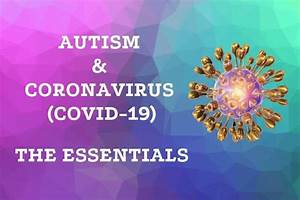
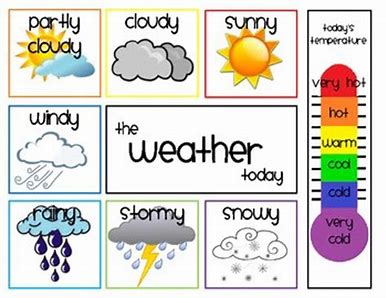

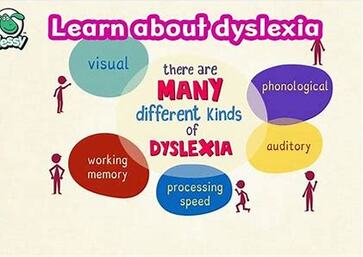


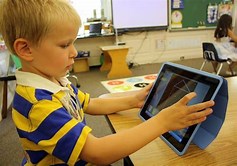




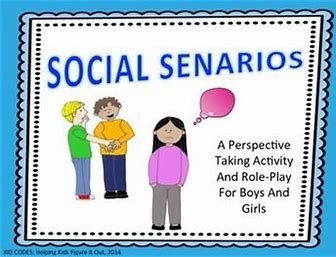
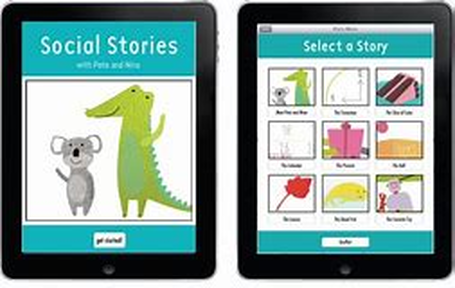




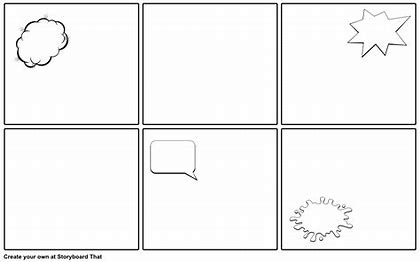
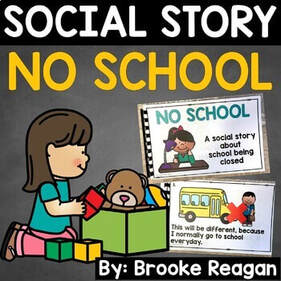








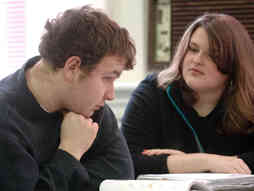



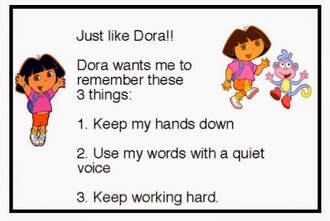


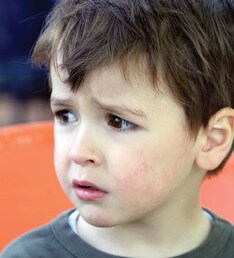
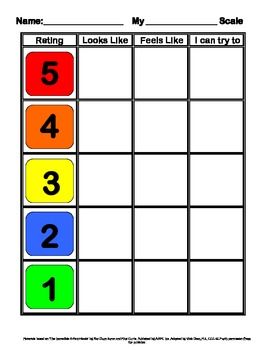




 RSS Feed
RSS Feed